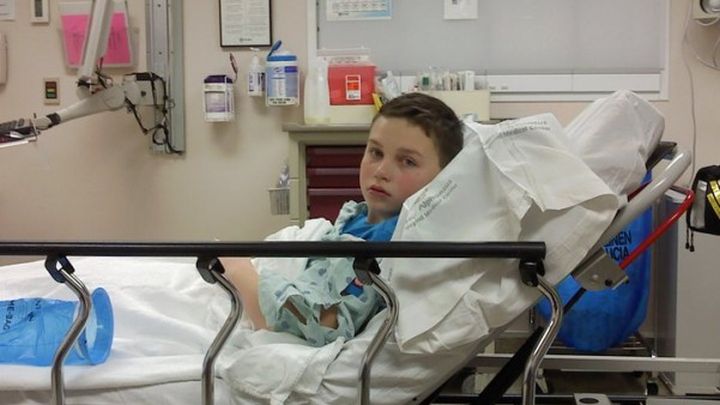
Trev's Mayo Clinic Fund for SM
Donation protected

Our story started almost 4 years ago, one January in a hospital emergency room with unimagineable pain and an 11 year old boy. The constant pain never ceased, in fact, lasted for 10 months before an exploratory surgery found that our then 12 year old, had tethered cord syndrome and according to the MRI, syringomyelia. According to the National Institute of Neurological Disorders and Strokes, "Tethered spinal cord syndrome is a neurological disorder caused by tissue attachments that limit the movement of the spinal cord within the spinal column. Attachments may occur congenitally at the base of the spinal cord (conus medullaris) or they may develop near the site of an injury to the spinal cord. These attachments cause an abnormal stretching of the spinal cord. The course of the disorder is progressive." Our neurosurgeon did the release surgery that freed up the nerves that were stretched so tight and mentioned very little about the syringomyelia, which is a cyst inside the spinal cord. We were told that everything should be fine after surgery and he would go back to being a normal pre-teen...and he was, for a little while. After a year, the pain came back with a vengence. After another year of mystery, no diagnosis, and baffled doctors in 2 different states, we finally started to do our own heavy research on syringomeylia.
Once again, according to the National Institute of Neurological Disorders and Strokes, "Syringomyelia (sear-IN-go-my-EEL-ya) is a disorder in which a cyst forms within the spinal cord. This cyst, called a syrinx, expands and elongates over time, destroying the center of the spinal cord. Since the spinal cord connects the brain to nerves in the extremities, this damage results in pain, weakness, and stiffness in the back, shoulders, arms, or legs. Other symptoms may include headaches and a loss of the ability to feel extremes of hot or cold, especially in the hands. Each patient experiences a different combination of symptoms. Magnetic resonance imaging (MRI) has significantly increased the number of syringomyelia cases diagnosed in the beginning stages of the disorder. Signs of the disorder tend to develop slowly, although sudden onset may occur with coughing or straining. If not treated surgically, syringomyelia often leads to progressive weakness in the arms and legs, loss of hand sensation, and chronic, severe pain." Our son has severe mobility issues and debilitating pain. It effects his school attendence and we have recently had to implement homeschooling. Syringomyelia is extremely rare and estimated only about 240,000 documented cases in the United States.
Now, after almost 4 very long tedious years and a 15 year old that has had his entire adolescence turned upside down, we have the chance to go to the Mayo Clinic for treatment. Due to his current medical needs, we will need to drive and most likely need to stay for about a week. Since I have resigned my job to take care of his medical and schooling needs, we are living on one income. We realize that this is a difficult season for many with the holidays fast approaching, but if you have a heart to give, it would mean the world to us to be able to procure the transportation expenses from Idaho to Arizona and back in order to find the medical relief that Trev needs. We hope to find answers and treatment for Trev at the Mayo Clinic and any help you can lend is greatly appreciated. Thank you in advance for your generosity.
http://www.ninds.nih.gov/disorders/tethered_cord/tethered_cord.htm
http://www.ninds.nih.gov/disorders/syringomyelia/syringomyelia.htm
Organizer
Dee Conley
Organizer
Mountain Home, ID